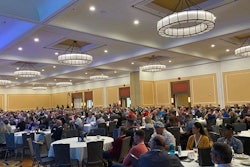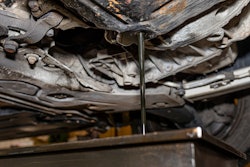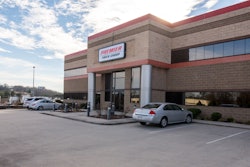
Most heavy-duty businesses on a business management system don’t use most of its capabilities, which can lead to dissatisfaction in the hefty investment business owners plunk down to install such a tool.
“The average customer today uses between 30-40% of any business system,” says Todd Robertson, vice president of sales at Karmak. He says it’s a struggle the company’s working to overcome, along with the perception that switching to or installing a new business management system is a “nightmare.”
“This is not the open-heart surgery or changing the tires while going down the road that it used to be,” says Jim Allen, Karmak’s CEO and president. “It used to be chaos.”
Dealer dissatisfaction
Many of the problems dealers and other heavy-duty businesses report with a management system are rooted in the process of installation and reframing the way a business thinks about itself and its employees.
David Wallace, director of sales engineering at Procede, calls the software provider-dealer business partnership the second most important dealer relationship behind the OEM. He says it’s important dealers choose a partner that will evolve with their business.
“Don’t buy the software for the dealership you have today,” advises Bennett Whitnell, vice president of sales at Procede. “Buy the software for the dealership you’re going to have 10 years from now, 20 years from now.”
[RELATED: Procede Software recognized for talent development]
Business should also think of the entire company, every employee and every process. Sharon Covitt, vice president of product success at Procede, says installing a new business system is really about change management. Not asking the right questions or considering the right people can lead to an ineffective user experience.
“Every single thing that everybody’s doing, all day long, is going to have to be questioned,” Wallace says, adding companies need to continue that process long after a new system has gone live. “You’re never really complete. This is where our training and implementation team come in to support all of your users as they go through the process. Training helps your employees grow long-term through help with upgrades and adoption of new or existing features. A comprehensive implementation plan helps align processes with setups and ensure those are reinforced during the go-live."
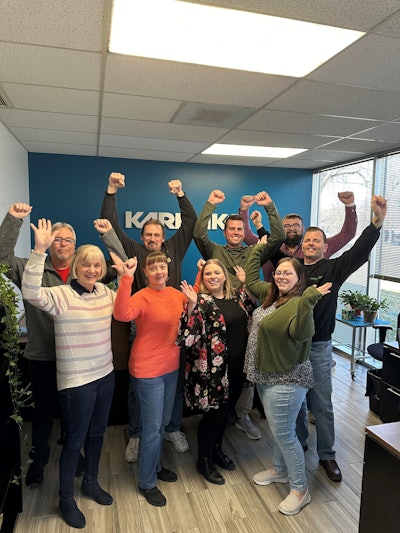 Northwest Trailer Sales celebrates at Karmak headquarters.Karmak
Northwest Trailer Sales celebrates at Karmak headquarters.Karmak
Making the best use of features
Training is critical to making the best use of a business management system’s features, as is connecting with other users to drill down into a system’s features. Not taking full advantage of a system’s bells and whistles can make it feel like the investment’s not paying off.
Robertson tells a story about a dealer in Canada that was allowing two hours for a dual axle brake job and were losing money. Karmak’s professional services team came in and did an analysis that showed for six or eight months out of the year, the hubs are full of snow and ice. Each hub had to be cleaned out and the rusted lug nuts removed before the brake job could get started. The team recommended adjusting the process to 2.5 hours in the system, which then allowed the dealer to turn a profit.
[RELATED: Getting up to speed with a new business management system]
“We challenge our customers not to focus just on the basic functionality of the system to expand what the system can do for you,” Robertson says.
CDK offers online learning tailored to individual roles at the dealership and hosts a user conference to help dealers manage change and processes. Procede and Karmak also host annual conferences to support their customers.
Not only do users get to connect at these events, but system provider employees also can keep up with what’s going on in the field, allowing them to create a better product, Allen says. He points to the company’s mobile service app and an upcoming feature that will allow businesses to add a credit card surcharge. Both ideas stemmed from connecting with customers.
“It’s a fantastic event where we really get to connect with customers, vendors, OEMs and everybody,” says Kim Stoops, vice president of operations at Karmak.
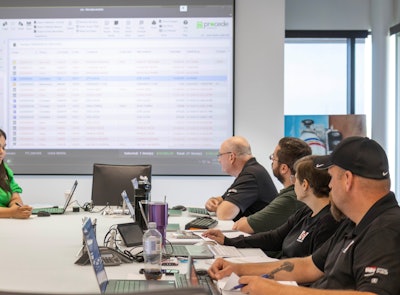 Procede conducts on-site training at Housby.Procede
Procede conducts on-site training at Housby.Procede
Is it a people problem?
No software can fix what’s inherently a people problem, either. Businesses have to solve those before they can really start using their management systems to their full potential.
“All of it comes down to people,” Whitnell says, adding one of the most difficult parts of setting up a business management system is figuring out just what a user company is trying to accomplish. “A lot of situations are people problems that we’re trying to fix with a machine.”
Robertson had another story about how employees can sabotage a management’s system’s success. Karmak determined an Alabama customer should increase their parts markups, but the people at the counter adjusted prices down, thinking customers were going to walk. The margin slowly eroded down to where it was before the installation of the management system.
“If you don’t do what the system is asking you to do, you can stay perfectly flat,” Robertson says.
Is it a data problem?
Clean data produces clean results in any software system. For business management systems, data is one of the most essential parts of the equation for success.
“Don’t just send something and hope for the best,” Wallace says. “Make sure it’s accurate. We’ll help.”
Whitnell says one of the reasons a lot of dealers are evaluating their relationship with their business system providers is their data. Maybe five years ago, one in every 10-15 businesses would have their own data personnel.
“Out of every 10 now, half of them have someone on the team to do something unique with data. It may be more,” Whitnell says. “That is a marked shift in the way dealers are approaching business now versus the way that it was 10 years ago.”
It’s been a rapid change, full of pitfalls for the unwary.
"Our customers are constantly pushing the envelope with their data and how they can think about their business, and we're here to help them with that," he adds. "The heavy-duty business of the future is fast and responsive, and we're always looking to partner with dealers with that growth mindset."
This article was updated Tuesday, May 28, 2024.
